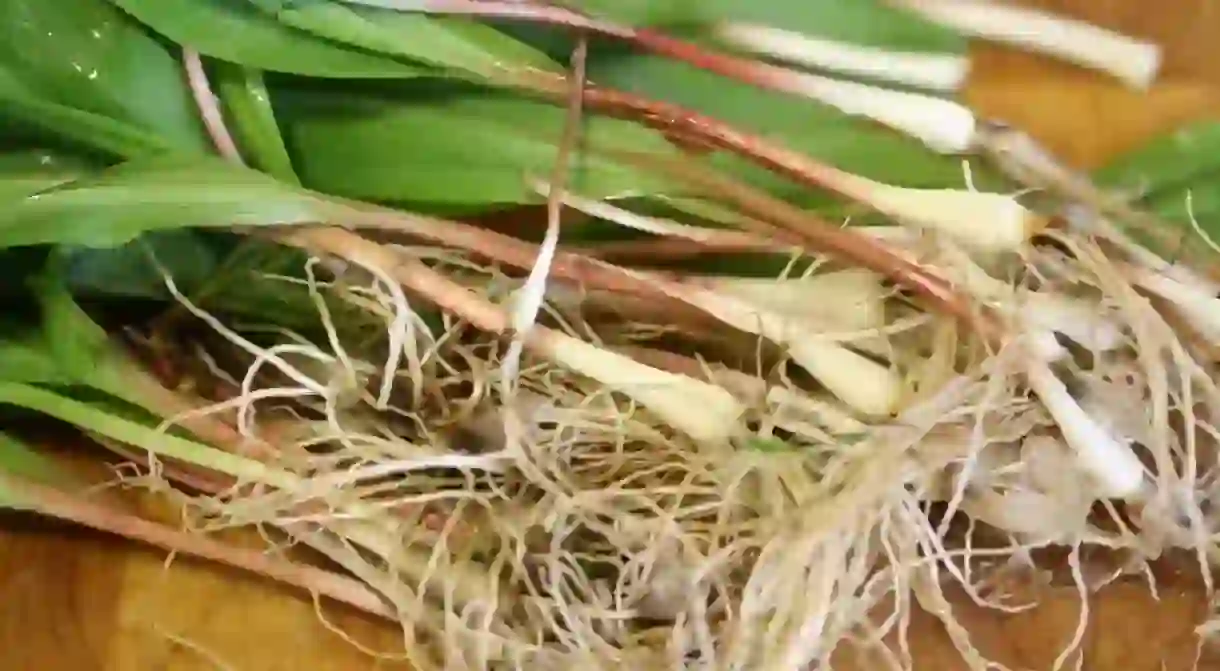A Guide to Wild Edibles in West Virginia

West Virginia’s motto is wild and wonderful, and there are lots of wild foods to eat in the state. If you’re ready for an adventure, listed below are several foods that you can find growing in the Mountain State.
Ramps
Every April, you’ll start seeing signs pop up on the side of the road with one handwritten word: “RAMPS.” These signs aren’t telling you to get off the road; they’re letting you know that you’ve found someone who has done the hard work of finding and digging up (and sometimes cleaning) the wild leeks known as ramps. In the spring, ramps are some of the first greens to start poking up through the forest floor. The leaves are broad and bright green (they kind of look like lily leaves) and give off a very pungent garlic smell. You can dig up the bulb and eat both the bulb and leaves. The leaves make a good substitute for leafy greens like spinach, and you can use the bulb just like you would garlic, leeks or onion.

Morels and other Mushrooms
Morels are a special delicacy and a little harder to come by than ramps. In the spring, when the temperature and rain are just right, morels pop up under hardwood trees such as hickory, maple, ash, and white pines. They usually grow in leaf litter and blend in very well. Wash well and cook before eating, or wash and dry to save them for later. Other mushrooms growing in the wild include Chanterelles, Hen of the Woods, and Chicken of the Woods. But be very careful when hunting any mushrooms, and if it’s your first time going, it’s best to go with someone who knows what they are doing. There are many poisonous mushrooms that look very similar to edible mushrooms, and unless you know the difference with 100% confidence, you probably shouldn’t eat what you’ve found. If you don’t have any luck hunting on your own, check local farmers’ markets for their finds.
Leafy Greens
If you want to do the forest a favor and get a really tasty leafy green, pull up some garlic mustard. Originally introduced by European settlers in Appalachia, the invasive plant has started taking over forests and eliminating native species. You can volunteer at garlic mustard pulls in parks and forests across the state, and if you get a pile of first-year greens, you’ll understand why the Europeans brought the plants in the first place. They cook down like other greens with a spicy garlic flavor and are great for making pesto.

For most city people, dandelions are weeds, not food. But in West Virginia, you can embrace this weed and eat it in a variety of forms. The flowers are edible, and you can make dandelion fritters by dipping washed flowers in batter and frying them in oil. You can also take the greens and use them for salad or cook them down like you would kale or spinach. Just make sure that you are harvesting your dandelions from a place where chemicals are not sprayed.
Watercress is another plant you can find and eat in West Virginia. The plant grows in shallow running water that is slightly alkaline, which usually means downstream from a concrete structure. The leaves don’t hold well once harvested, so make sure to eat them quickly in a spring salad.
Berries
In the late summer, blueberries, blackberries, raspberries, and elderberries start appearing. You can find them growing on the side of the road or paths in the forest. Just make sure you get to them before the deer do!

Pawpaws
A delicious delicacy, pawpaws are starting to get a following outside of Appalachia. These fruits feel like they should be growing in a tropical climate somewhere, both based on how they look and taste. The light green pods are filled with a fleshy white fruit and big seeds, and the flesh tastes like a great combination of mangoes, bananas, and pineapple. The reason pawpaws have never really had commercial success is because they are hard to transport. Not only does the outside bruise easily, but they also over-ripen quickly. If you’re lucky, you can find one growing in the wild, or you can look to those who are now trying to grow the pawpaws commercially for a growing market.














